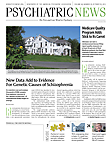When teens at risk for depression learn how to deal with unrealistic or negative thoughts, they may be able to keep from becoming depressed over the long haul, suggests a study headed by William Beardslee, M.D., a professor of child psychiatry at Harvard Medical School.
The study included 316 youth aged 13 to 17 with a parent who had been diagnosed with current or prior depressive disorders and who themselves had a history of depression or had current depressive symptoms that did not meet sufficient criteria for a depression diagnosis.
All the teens in the study, which was published September 4 in JAMA Psychiatry, were permitted to initiate or continue mental health care services not related to the prevention program being evaluated in the study. Half of the youth were randomly assigned to receive a cognitive-behavioral prevention (CBP) program that included eight weekly group sessions emphasizing cognitive restructuring and problem solving, as well as six monthly booster sessions.
For example, “Youth in the CBP program were taught to pay closer attention to their thoughts or ‘self-talk’—the automatic and often unexamined beliefs and interpretations that we all have in response to difficult situations,” Beardslee explained in an interview with Psychiatric News. “The program particularly focused on unrealistic or highly negative self-talk (for instance, ‘If I don’t get 100 percent on this test, I’ll be a failure for life’). Once teens became skilled at uncovering these beliefs, we taught them to test the accuracy, usefulness, and reasonableness of these beliefs. They asked themselves whether each belief was going to help them now or in the future. What was the evidence supporting the belief? What was the evidence against?”
Once the subjects “identified particular beliefs or self-talk as unrealistic or unhelpful, they were taught to generate alternative, more realistic beliefs to test in place of the original belief,” Beardslee said. “Did this new interpretation help them? Did they feel less depressed, anxious, or angry? If their negative belief was in fact accurate (for example, something undesirable did actually happen), then they were taught ways to either change the situation (problem-solving) or manage their reactions to it (secondary control coping).”
The subjects were evaluated for depression at baseline, after the acute intervention (month 2), after the booster sessions (month 9), and again at months 21 and 33.
Over the 33-month follow-up period, and for the sample as a whole, the intervention was significantly effective, with 37 percent of subjects in the CBP group experiencing a depressive episode of at least two weeks compared with 48 percent in the usual-care group. Depression was determined by a score of 4 or higher on the six-point Depression Symptom Rating. The teens also completed the CES-D at each follow-up evaluation.
“We were quite pleased that the effects noted in our earlier analysis nine months after enrollment were sustained at 33 months, as it is difficult to demonstrate longer-term prevention effects,” said Beardslee. At the nine-month follow-up, 21 percent of the CBP group had experienced depression symptoms, in contrast to 33 percent in the usual-care group.
When parental depression at baseline was considered, though, it changed the equation. The intervention no longer appeared to be significantly effective. Specifically, where there was no parental depression at baseline, 32 percent of CBP-participating youth experienced depression during follow-up, compared with 52 percent of the youth receiving usual care. But where there was parental depression at baseline, 42 percent of the CBP group experienced depression during follow-up, compared with 43 percent of the usual-care group.
Possible reasons why parental depression eroded the program’s effectiveness, Beardslee and colleagues suggested, is that “it directly affected intervention uptake or use or represented a marker of some third variable such as shared genetic vulnerability....”
Beardslee said that “more study is needed to understand why it is that children whose parents are currently depressed do not benefit as much from the intervention and, importantly, what should be done about that (perhaps obtaining treatment for parents or other strategies).” He added that “more work on using these strategies in different cultural and ethnic groups and in different settings—such as schools and community settings—is needed.”
Meanwhile, the findings have implications for psychiatric practice, Beardslee believes. “We should pay more attention to the prevention of depression in adolescents as well as to its treatment. In particular, psychiatrists treating depressed patients who are parents should inquire about the health and well-being of the depressed patients’ children and help get them connected with services as needed. Similarly, mental health professionals working with children should ask about the mental health of the child’s parents.”
The study was funded by the National Institute of Mental Health, the National Center for Research Resources, and the National Center for Advancing Translational Sciences. ■

